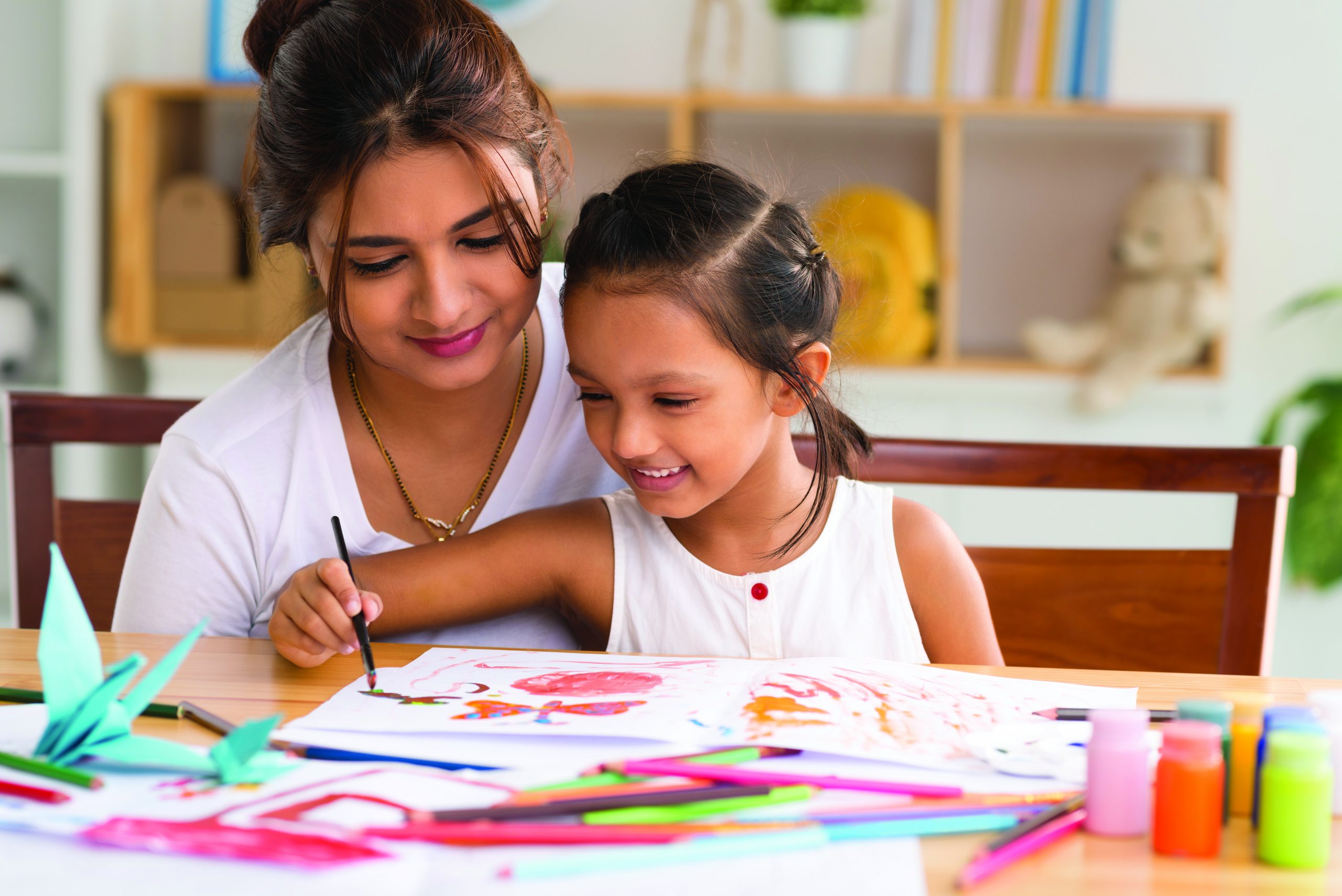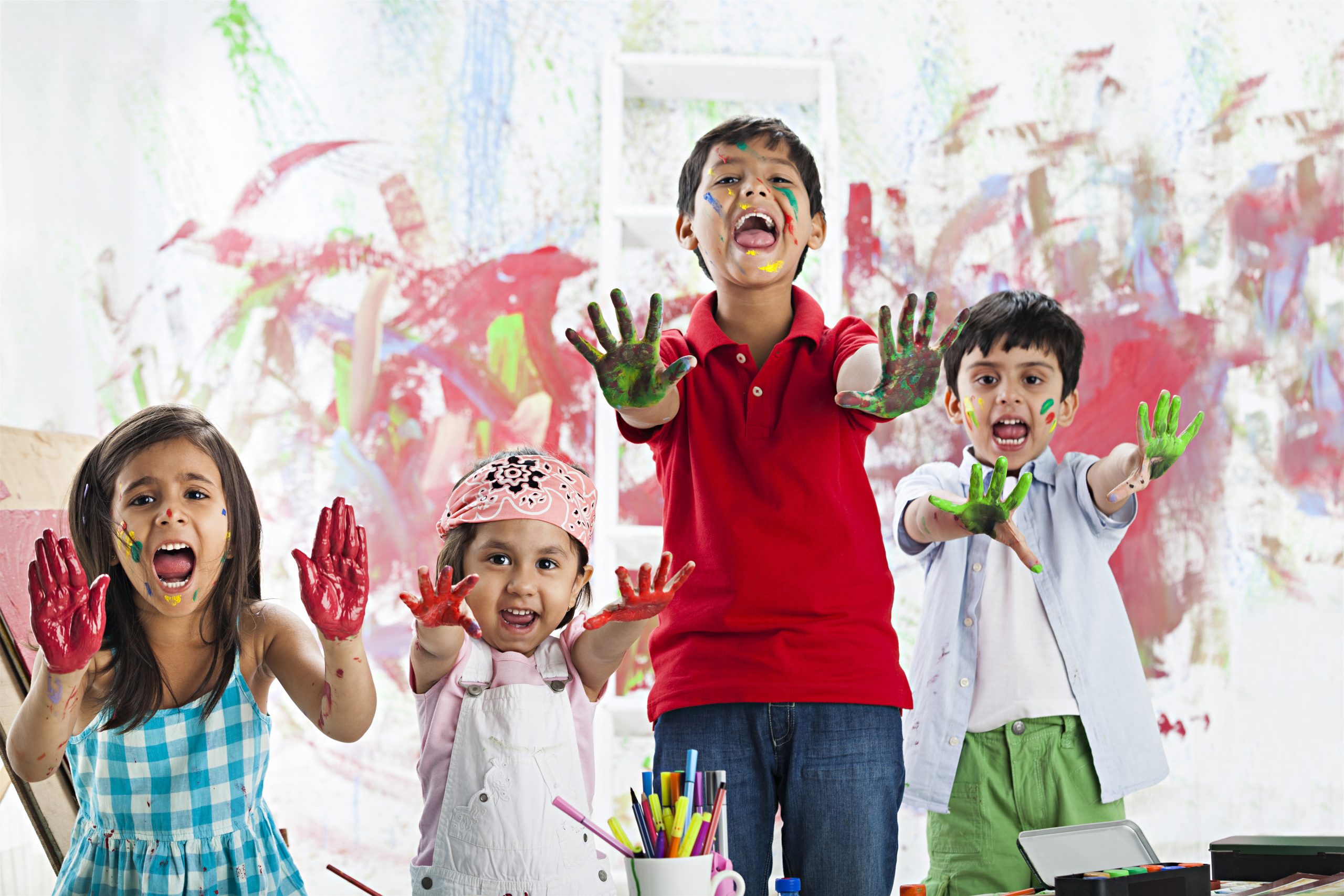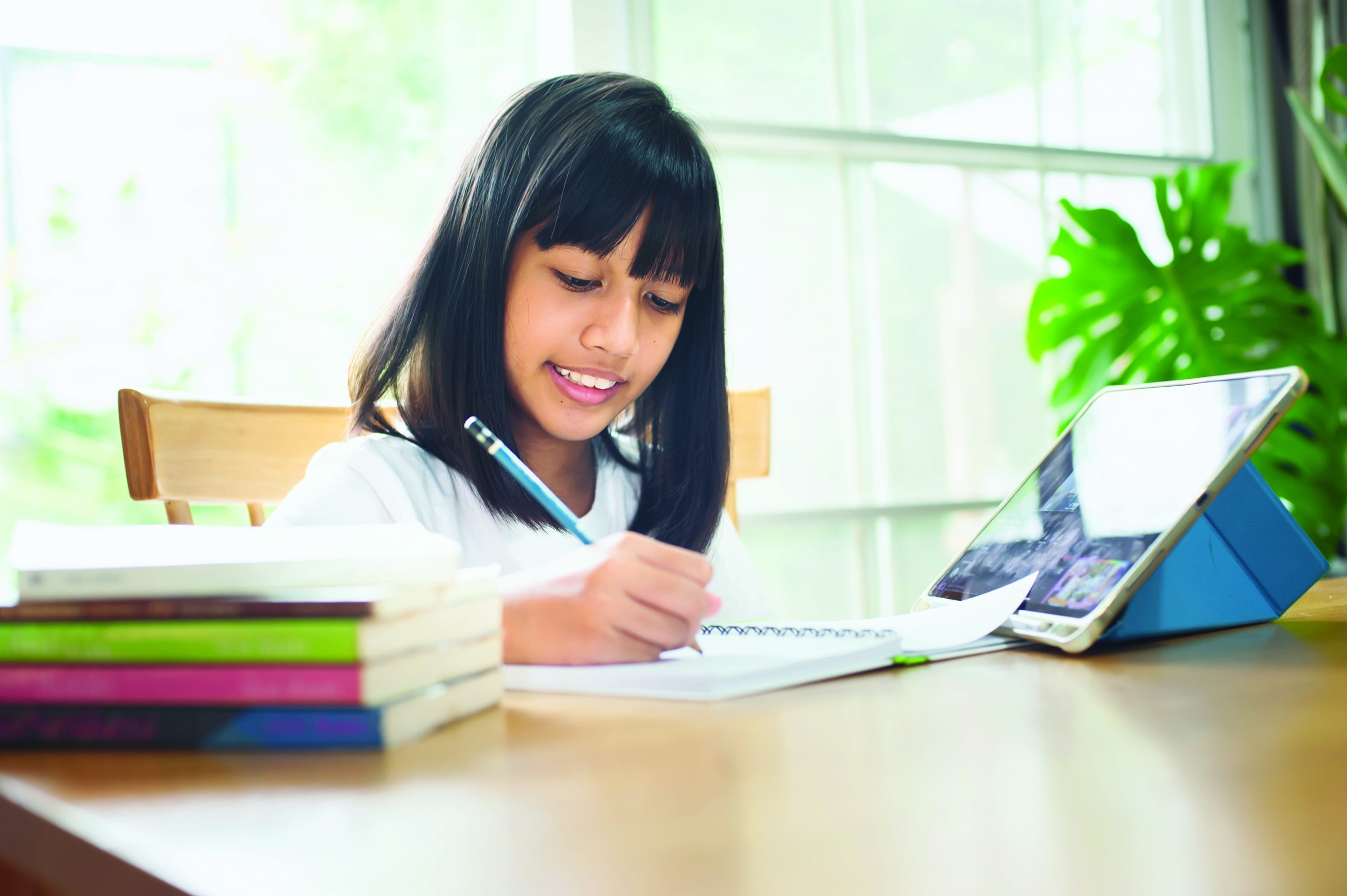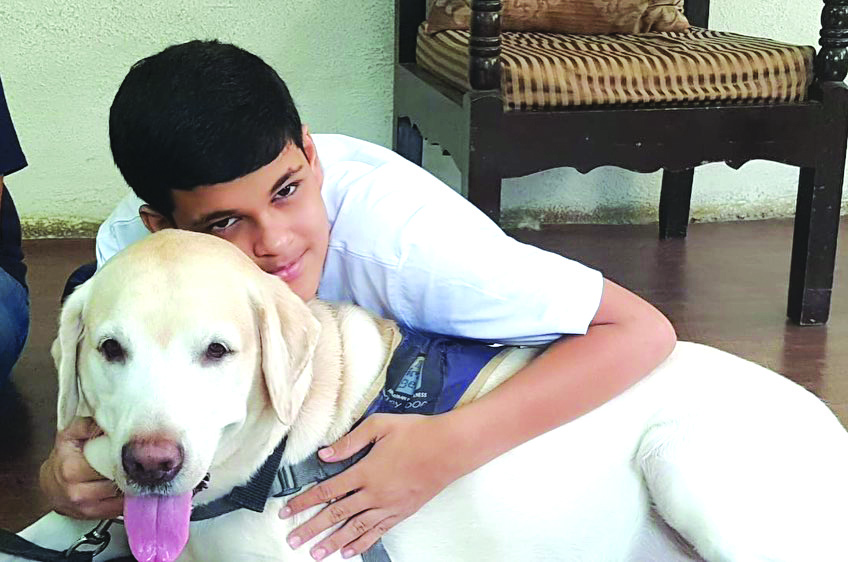A rash of new research studies indicate that natural, holistic therapies are especially suitable for reducing stress and improving the emotional resilience and self-esteem of children writes Ramiya Sakthivel, Mini P. & Cynthia John
A silver lining of the Covid-19 pandemic is that it brought the issue of children’s mental health and well-being into national focus. As children struggled to cope with lockdown of schools, socialisation restrictions and family health and financial emergencies, they suffered substantial emotional and mental damage.
In the post-pandemic era, this has manifested by way of socialisation skills deficiency, irritability, anxiety, anger management, fear, depression and digital addiction. Several studies have reported widespread deterioration in children’s mental well-being. For instance, a 2021 Unicef survey found that 14 percent of 15-24-year-olds in India are deeply depressed.
With public education and health having been criminally neglected for decades in post-independence India’s ill-designed centrally planned national development effort, the pandemic accentuated the impact on children’s mental health, and health and wellness experts are warning about a brewing full-blown child mental health crisis.
A World Health Organisation (WHO) report released in 2017 reported that 25 percent of adolescents in India in the 13-15 age group suffer depression. According to the report, 11 percent of adolescents countrywide are “distracted”; 8 percent are anxious and suffer sleep disorder; 8 percent experience loneliness most of the time; and 10 percent are unable to forge friendships. According to another survey conducted in 2019 by the National Institute of Mental Health and Neurosciences (NIMHANS), Bengaluru, 30 percent of Indian children aged 13-17 years are stressed.

Dr. Keerthi Karanam
“India like many countries in the world is confronted with a child mental health crisis accentuated by the pandemic. Stress levels among children are high with a growing number also reporting anxiety disorders, depression, attention-deficit/hyperactivity, oppositional defiant, and post-traumatic stress disorders. It’s important for parents and educators to acknowledge this crisis and take preventive and corrective measures,” warns Dr. Keerthi Karanam, consultant, psychiatry, CARE Hospitals, Hyderabad.
With Gen Z’s mental well-being becoming a high priority post-pandemic issue, parents — even if not public officials — are increasingly acknowledging the importance of addressing mental health problems swiftly and professionally before their children withdraw into social media. Moreover, while they are becoming aware that latter-day psychological therapies are available to treat mental health disorders, a small but growing number of them are choosing to opt for natural therapies to address anxiety, depression and related disorders, to alleviate stress and boost the overall emotional well-being of children.
Natural therapies include art, animal-assisted, journal, nature and talk curatives. A rash of new research studies indicate that
natural, holistic therapies are especially suitable for reducing stress and improving the emotional resilience and self-esteem of children.
In the pages following, we present four natural therapies that are becoming popular to alleviate children’s stress and promote their emotional and mental well-being.
 Art therapy
Art therapy
Art therapy is all about getting children involved with creative activities such as drawing, painting, doodling and sculpture to enable them to express their emotions. It’s rooted in the idea that creative expression enables mental healing and emotional well-being. Several research studies have found that immersion in creative art therapy reduces anxiety, depression, and behavioural problems, especially in children. According to a 2019 University of Washington study, surveyed teen girl children experienced reduction in stress and headaches after participating in six 50-minute sessions of art therapy.
“The core of art therapy is in a trained expert combining neuroscience and art media to enable people to release supressed emotions thereby reducing stress and anxiety. In particular, it is used to treat trauma, anxiety, and mood disorders which have strong neurological basis. During art therapy, the right hemisphere of the brain is stimulated, activating the reward centre of the brain. This makes you feel accomplished and productive. Regardless of the end product, creating art produces a sense of pleasure in the brain. Art therapy is especially beneficial for children who may not be able to articulate their emotions verbally,” says Aditi Kaul, head of the Arts Based Therapy Programme, Fortis National Mental Health Programme, Delhi.

Aditi Kaul
In Kaul’s opinion, art therapy can help children cope with traumatic incidents such as separation of parents, loss of a loved one, classroom bullying as well as children struggling with low self-esteem, anxiety, depression, and learning disabilities. “While art therapy is beneficial in treating children with mental health disorders, it is recommended for all. It reduces stress and anxiety, enhances self-esteem and improves problem-solving skills,” adds Kaul.
Kaul suggests these creative art activities to enhance children’s mental well-being:
- Provide your child paper and colouring materials. Ask her to sit in a quiet space in the house, think of a special or happy day and sketch something that expresses it. The thought processes associated with this activity trigger the brain to release feel-good hormones known as endorphins which combat stress and anxiety.
- Provide your child acrylic paints and brushes, and a large canvas board. Ask her to place different blobs of colour across the sheet. Then, use a brush to slowly merge the colours, and observe the effects it creates. Watching the colours mix into each other relaxes and calms the mind.
- Take several sheets of newspaper and soak them overnight in a bucket of water. Ask your child to squeeze out the water, mash the paper well, add a little fevicol and shape the mixture into different shapes. Dry in the sun.
 Buy some wet/dry/modelling clay and a large board. Ask your child to model the clay to create a happy scene. Clay art and modelling is a multi-sensory activity which improves children’s motor skills and attention span, builds imagination, boosts self-esteem and soothes the brain.
Buy some wet/dry/modelling clay and a large board. Ask your child to model the clay to create a happy scene. Clay art and modelling is a multi-sensory activity which improves children’s motor skills and attention span, builds imagination, boosts self-esteem and soothes the brain.- Encourage your child to draw a picture that expresses her negative feelings. For example, if she sketches big black drops, it may indicate tears. Now, ask her to draw something to set it right. It could be a large, red smile that covers the tear drop. Or a pattern that changes the sad teardrop into a beautiful flower bulb.
Journal therapy
 Maintaining a journal or diary is becoming increasingly popular. According to the US-based Center for Journal Therapy, “purposeful and intentional use of reflective writing furthers mental, physical, emotional, and spiritual health and wellness”. The prime difference between everyday journal/dairy maintenance and therapeutic journaling is that in the latter, the diarist is encouraged to venture beyond mere recording of daily life events to expressing deep thoughts, emotions and experiences. “It’s about delving deeper; writing in a way that helps us to make sense of our internal experiences, learn, and gain new perspectives on our challenges… that can help us work through difficulties and move forward,” says an online blog (https://blog.zencare.co/therapeutic-journaling/).
Maintaining a journal or diary is becoming increasingly popular. According to the US-based Center for Journal Therapy, “purposeful and intentional use of reflective writing furthers mental, physical, emotional, and spiritual health and wellness”. The prime difference between everyday journal/dairy maintenance and therapeutic journaling is that in the latter, the diarist is encouraged to venture beyond mere recording of daily life events to expressing deep thoughts, emotions and experiences. “It’s about delving deeper; writing in a way that helps us to make sense of our internal experiences, learn, and gain new perspectives on our challenges… that can help us work through difficulties and move forward,” says an online blog (https://blog.zencare.co/therapeutic-journaling/).
Experts believe that journal therapy is a great way for children especially teens to “release supressed emotions, write down frustrations and work through confusing feelings”. “It enables children to express and process emotions. It’s a self-help healing process. For example when a child who has experienced grief and trauma is encouraged to write about it, she is likely to experience liberation. Words become the outlet to express deep sentiments, to replicate difficult situations, and bring out buried emotions. It facilitates problem solving, heals, and builds resilience,” says Kaul.
Here are some ways you can encourage children to start journal writing:
- Encourage them to read children’s books written in a diary or journal format, such as the Diary of a Wimpy Kid series. This will motivate them to maintain their own journal.
- Set aside one day a week where all family members sit down to write. You can explore several forms of writing such as shape poems, free verse, short story writing, or proverbs-writing. These can be later included in the journal.
- Create an attractive notebook. Get your child to collect unused sheets from old notebooks, design an attractive cover, and make a journal by punching the sheets. Use a satin ribbon or wool to tie them together. A handmade journal is extra special for children.
- Journaling with photographs, images and doodles is also interesting for children. Choose personal photos to use in the journal or etch some pen decorations and doodles. Both you and your child can make an attractive journal cover and inside layout and then share it with each other.
Sample prompt topics to write about in a therapeutic journal:
- What are your five favourite qualities about yourself?
- Write a letter to someone who has had a positive impact on your life.
- List out three of the best compliments you’ve ever received.
- Write down five positive things about yourself you’d like to remember the next time you’re in a bad mood.
- List 10 things that make you smile, no matter what.
- Write a letter of forgiveness to someone in your life who has caused you pain.
- Write a letter of forgiveness to yourself for past actions you’re not proud of.
(Source: (https://blog.zencare.co/therapeutic-journaling/).
Animal-assisted/ pet therapy
 The American Psychological Association defines animal-assisted therapy (AAT) as “the therapeutic use of pets to enhance individuals’ physical, social, emotional, or cognitive functioning. Animal-assisted therapy may be used, for example, to help people receive and give affection, especially in developing communication and social skills. It may be most effective for people who have suffered losses or separation from loved ones.”
The American Psychological Association defines animal-assisted therapy (AAT) as “the therapeutic use of pets to enhance individuals’ physical, social, emotional, or cognitive functioning. Animal-assisted therapy may be used, for example, to help people receive and give affection, especially in developing communication and social skills. It may be most effective for people who have suffered losses or separation from loved ones.”
Numerous research studies have found that AAT is especially beneficial for children. For example, a 2019 study published in the US-based PubMed Central found that the use of therapy dogs improved the efficacy of mental health treatments among adolescents.
“Animals tend to provide unconditional acceptance and communicate in ways that children understand. Dogs especially, are great, as they give unconditional love, are loyal and protective. AAT helps children to overcome stress, anxiety and trauma. Moreover, it builds communication skills, empathy and bolsters children’s self-confidence,” says Arjun A.K, co-founder of Catalyst Pet Café, Bengaluru.
According to Arjun, while AAT is a structured therapy programme to treat children with mental health problems, parents can also provide a boost to children’s mental well-being by agreeing to keep a domestic pet at home. “Keeping a pet is super good for a child’s mental health. They provide fun and companionship which often means children are less anxious or withdrawn. Maintaining a pet also teaches responsibility, boosts emotional well-being, and reduces stress levels,” says Arjun.
Talk therapy
Like the name implies, talking is at the core of talk therapy. People explore their feelings by talking about them to therapists specially trained to help individuals navigate problems and find solutions. The UK-based National Institute for Health and Care Excellence (NICE) says that “talking therapy works as well for children as it does for adults” and recommends “talking therapy rather than medicines for children who are depressed”.
Dr. Keerthi Karanam, psychiatry consultant at CARE Hospitals, Hyderabad, says that parents and family members are usually the first people children reach out when in distress and that by “simply talking, listening and taking corrective steps, parents can prevent many mental health problems”. “When a child voices a struggle and reaches out for support to parents, family and friends, the first step is to listen to them without judgement, comparison, command or advice. By simply listening and empathising with their anxieties and challenges, we can support children to develop coping mechanisms. Being kind, compassionate yet firm and supportive reassures children that their fears, frustrations and anxieties will be resolved,” says Dr. Karanam.
Nature therapy
 Nature is a great healer. Immersive nature experiences help adults and children de-stress and calm mind and body. “Simply viewing scenes from nature can reduce cortisol (the stress hormone) levels, blood pressure, and heart rate and increase activity in the areas of the brain associated with empathy and altruism — the same areas that are more active when we are emotionally stable or expressing a positive outlook,” writes Jeff Baxter in an essay titled How Nature Therapy Helps Children Heal (www.ecoparent.ca)
Nature is a great healer. Immersive nature experiences help adults and children de-stress and calm mind and body. “Simply viewing scenes from nature can reduce cortisol (the stress hormone) levels, blood pressure, and heart rate and increase activity in the areas of the brain associated with empathy and altruism — the same areas that are more active when we are emotionally stable or expressing a positive outlook,” writes Jeff Baxter in an essay titled How Nature Therapy Helps Children Heal (www.ecoparent.ca)
Apart from making the effort to take time out during weekends/holidays for nature walks/forest bathing/trekking trips, parents can help children bond with nature at home. Design a balcony or terrace garden with children helping to tend the plants. Use natural stones, a bird bath and bird feeder to enhance

Sheela Thammiah
the experience. See https://www.educationworld.in/do-it-now-15/ on how children can build a bird bath and feeder. You can also set up an aquarium with plants, pebbles and a variety of fish.
“When I enter my terrace garden, it immediately soothes my nerves. All my worries are forgotten as I examine the progress of my flowers, fruits and vegetables. My teenage children feel the same when they come home. They help with gardening and maintaining the plants. I strongly advise parents to establish a terrace/balcony garden; it can be creatively stimulating, restorative and therapeutic for children and adults,” says Sheela Thammiah, a Bengaluru-based homemaker.
Other therapies
“Mindfulness-based stress reduction is another therapy that is gaining popularity in India for stress management. In addition, relaxation techniques such as deep breathing, progressive muscle relaxation, and yoga are also recommended for children to improve their mental health,” says Dr. Keerthi Karanam.
To enable children to give their best, their social and emotional well-being is a necessary precondition. And often time-tested natural therapies work best.


























